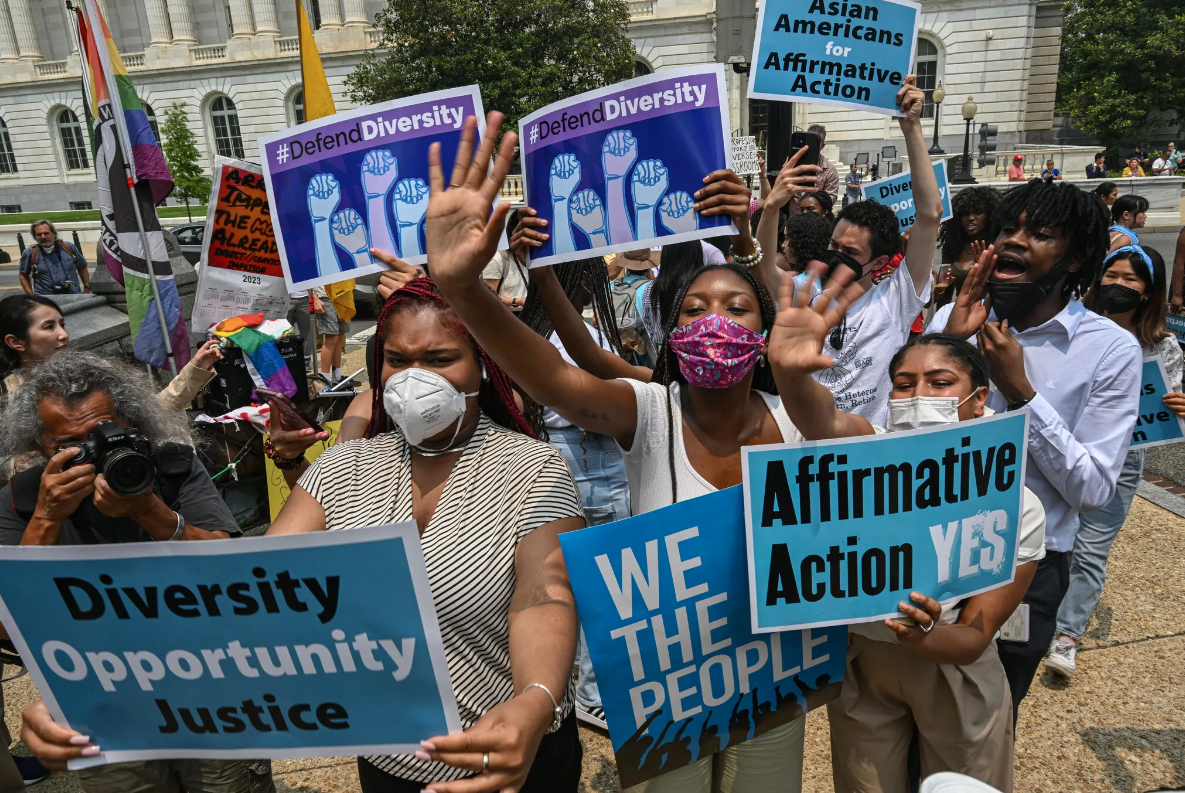The Supreme Court closed out its term with a pair of seismic rulings with wide-ranging impacts on colleges and students.
In a 6-3 decision on June 29, the justices effectively ended affirmative action by striking down the admissions policies of Harvard and the University of North Carolina. The majority opinion held that the colleges’ affirmative action policies violated the equal protection clause of the 14th Amendment.
Critics of the ruling worry that it could undermine diversity in both higher education and hiring. Much like the 2022 SCOTUS decision that overturned Roe v. Wade, the rejection of affirmative action policy abruptly shifts an established norm in the American college admissions process.
The justices also ruled 6-3 along ideological lines in the June 30 decision that tossed out the Biden administration’s student loan forgiveness plan. The sweeping plan would have forgiven at least $10,000 in student loan debt for millions of borrowers.
Six states sued over the forgiveness plan, and the court found that the cabinet secretaries did not have the authority to make such changes without clear congressional authorization. Although this ruling did not have the same societal and racial components as the affirmative action decision, the court again took a course that disrupted the expectations of many Americans.
Cherry Hill East students are likely to be impacted by both of these decisions in the near future. Affirmative action will no longer be available to historically disadvantaged groups. Those who wouldn’t have directly benefited from affirmative action, but are still concerned with social justice, will also want to ensure that they have the opportunity to attend a diverse campus.
With student loan forgiveness denied, current CHE students could face the same debt crisis as the Millennials that went before them, without hope for relief. As tuition costs rise, it seems inevitable that history will repeat itself with regard to student loan debt. However, student debt relief could make a return, but only through an act of Congress. Following this decision, the precedent is set by SCOTUS that only the legislative branch has jurisdiction over such fiscal matters.
The end of affirmative action also highlights the true catalyst of inequity in the college admissions process: legacy admissions.
For esteemed universities looking to augment their massive endowments, legacy admits aim to maintain relationships with wealthy families. In practice, these legacy admits are not wholly negative – at times, their donations to the school can help subsidize scholarships and financial aid for other students. However, for an educational establishment like Harvard University, with an endowment valued at a whopping $50.9 billion, legacy admits serve as little more than an inequitable hurdle many students cannot compete with.
Citing Harvard University, legacy applicants between 2014 and 2019 were admitted at a rate of 33%. When compared with the 6% overall acceptance rate during this time, the sheer advantage given to legacy applicants over their non-legacy counterparts undermines a fair and equal evaluation of each application.
Although affirmative action may have been eliminated from the picture by the Supreme Court, several universities have vowed publicly to find ways to essentially circumvent the decision.
In the wake of the announcement, Princeton University put out a statement that although the “decision will make [Princeton’s] work more difficult, [they] will work vigorously to preserve — and, indeed, grow — the diversity of [their] community while fully respecting the law.”
Brown University released a similar statement hoping to “underscore that Brown is and will remain firmly committed to advancing the diversity and inclusion that is central to achieving the highest standards of academic excellence.”
Without affirmative action, it’s important that the institutionalized socioeconomic disadvantages that disproportionately affect minority groups are addressed. By bolstering K-12 education in low-income communities and targeting areas that have yet to recover from redlining practices, we can hopefully stoke change amid these groundbreaking decisions.


